




Name: Class: School:

Academic Authors: Roma Jain, Monika Jain, Anuj Gupta
Creative Director: Bhavna Tripathi
Book Production: Naveen Gauniyal, Sanjay Kumar Goel
Project Lead: Pooja Gupta
VP, Learning: Abhishek Bhatnagar
All products and brand names used in this book are trademarks, registered trademarks or trade names of their respective owners.
© Uolo EdTech Private Limited
First impression 2025
This book is sold subject to the condition that it shall not by way of trade or otherwise, be lent, resold, hired out, or otherwise circulated without the publisher’s prior written consent in any form of binding or cover other than that in which it is published and without a similar condition including this condition being imposed on the subsequent purchaser and without limiting the rights under copyright reserved above, no part of this publication may be reproduced, stored in or introduced into a retrieval system, or transmitted in any form or by any means, electronic, mechanical, photocopying, recording or otherwise, without the prior written permission of both the copyright owner and the above-mentioned publisher of this book.
Book Title: Dawn Numeracy Skillbook Level C
ISBN: 978-81-980546-7-8
Published by Uolo EdTech Private Limited
Corporate Office Address: 85, Sector 44, Gurugram, Haryana 122003
CIN: U74999DL2017PTC322986
Illustrations and images: www.shutterstock.com, www.stock.adobe.com and www.freepik.com
All suggested use of the internet should be under adult supervision.

elcome to DAWN, our comprehensive series for Early Childhood Education that has been meticulously crafted to align with the guidelines of the Foundational Stage as outlined in the National Education Policy (NEP) 2020. This series is designed to provide a holistic learning experience, fostering the comprehensive development of young learners in accordance with the developmental milestones and learning outcomes specified in the National Curriculum Framework (NCF) 2022
DAWN offers a rich blend of interactive and activity-based content to nurture each child's physical, emotional, intellectual, and spiritual growth. Our approach ensures that learning is enjoyable and meaningful, catering to every child's interests and abilities. By integrating various domains of development, we aim to create an environment where children can thrive, explore their unique potentials and cultivate a lifelong love for learning.
The curriculum is structured to promote Physical Development by incorporating activities that enhance motor skills, health, and overall physical well-being. Social and Emotional Learning (SEL) is a critical component focusing on building empathy, cooperation, and strong interpersonal relationships. Through engaging and thought-provoking activities, children develop Intellectual Capacities, fostering critical thinking, problem-solving, and a curious mind.
In line with the NCF 2022, DAWN also emphasises Spiritual and Moral Development, encouraging children to understand and embody values such as honesty, integrity, and respect for others. We aim to instill a sense of responsibility towards the environment, promoting sustainable practices from an early age.
Our curriculum is not just a series of lessons but a journey of discovery, growth, and joy. We believe that every child is unique, and our tailored approach ensures that each learner can engage with the content in a way that resonates with their individual needs and interests. By providing a nurturing and stimulating environment, DAWN sets the foundation for future success, preparing children not just for school, but for life.
The DAWN Level C Kit includes:


Free Additional Resources:
• Flash Cards
• Sticker Sheets
• Suggested Activities List, for teachers and parents
• Teacher's Manual
• Digital Learning Resources
Thank you for embarking on this educational journey with us. Together, we can make the dawn of early childhood education a bright and promising start for every child.

Dawn is a carefully crafted activities-based learning program that caters to all domains of Early Childhood Education, including physical, emotional, mental, intellectual, and spiritual development. The program includes textbooks in English, Mathematics, General Awareness, STEM Exploration and Rhymes & Stories. The program also extends ample support to teachers through lesson plans and other assets that help attaining the best outcomes.

Engaging Textbooks
Teacher's Manual
Assessment Rubrics for Teachers
Progress Report Sheets
Student and Teacher Apps
Learning Videos
Interactive Tasks and Exercises
iv The classroom program is augmented by the digital world, which includes assets like animated Talking Books, phonic songs, animated rhymes, animations on pre-number concepts, numbers, and shapes; and other interactive activities.

The National Education Policy (NEP) 2020 represents a transformative shift in the country’s education system. It aims to create a more holistic, dynamic and multidisciplinary approach to education. NEP 2020 focuses on fostering conceptual understanding, skills, values and competencies that align with the demands of the 21st century, while also preserving India’s rich cultural heritage. UOLO is fully committed to actualizing the vision of NEP 2020 by meticulously adhering to its outlined recommendations.










1. Physical and motor development
2. Cognitive development
3. Cultural and artistic development
4. Socio-emotional and ethical development
5. Language and Literacy
6. Numeracy
7. Play and activity-based learning
8. Holistic and multi-faceted learning
9. Inclusion of local traditions of India

10. Technology integration
Competencies and Domains
Teaching and Learning Pedagogy



Rhymes and Stories
Build familiarity with numbers, shapes, measurement and mathematical language and problem solving skills. Encourage development of gross motor skills.


Flash Cards
Assist development of basic numeracy, literacy and fine motor skills in a playful and engaging way. 1 2 5 6 7 8


Drawing and Scribbling activities
Promotes hand-eye coordination and motor skills.

STEM Exploration activities
Encourage curiosity, critical thinking and problem-solving.

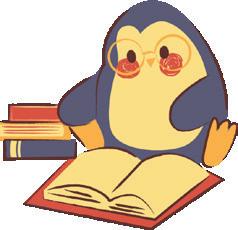
Contribute to development of early reading skills which help children to explain their mathematical reasoning.





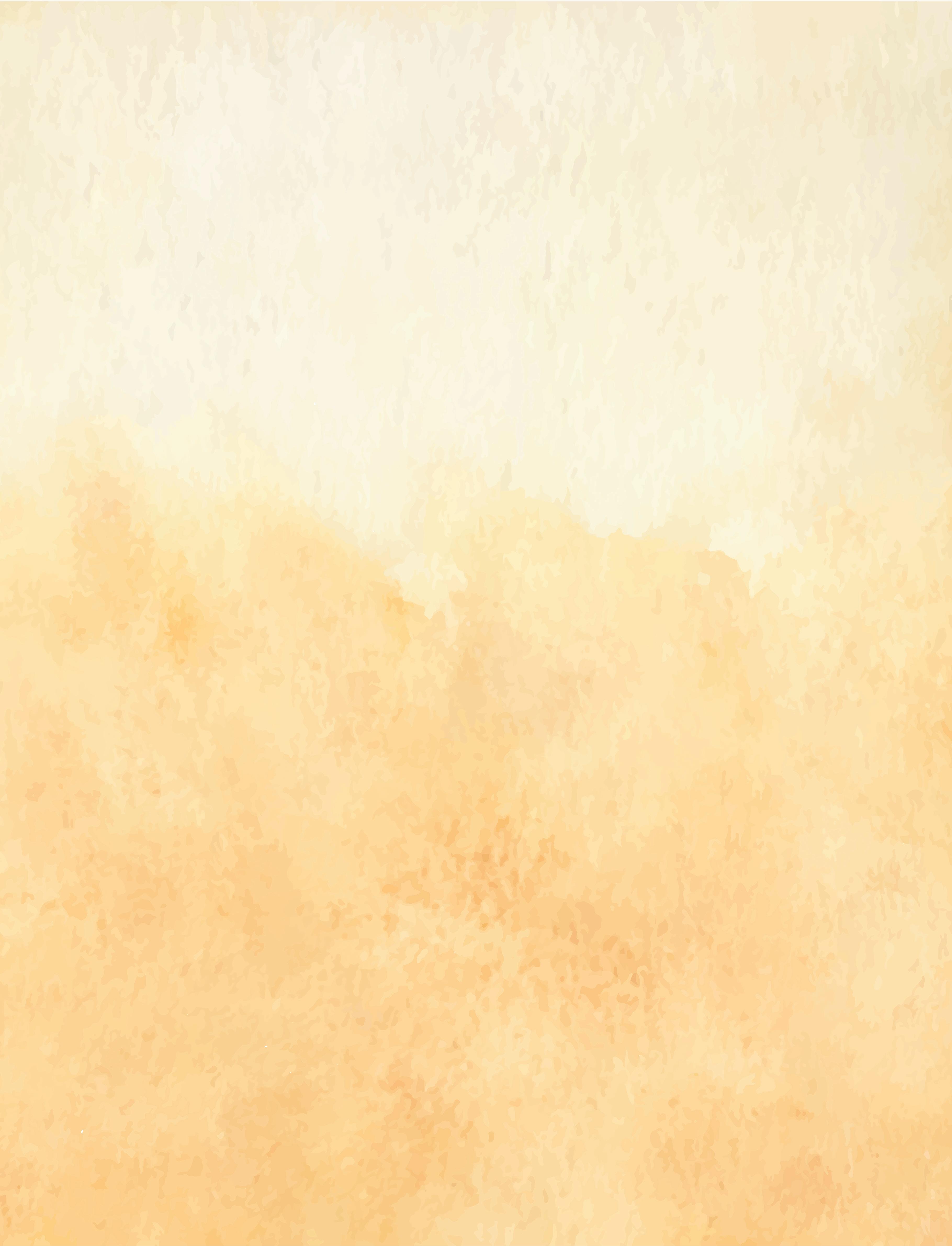
Exposure to diverse cultures to develop an appreciation for global and local artistic traditions, and connect with cultural heritage.
2 3 4 7 8 9


Picture Dictionary pages that enhance vocabulary and promotes language-rich discussions.

Storytelling and Role-Playing activities
Develop cognitive abilities like sequencing and understanding cause and effect. Allow exploration of emotional expression in social settings to develop empathy and ethics.



Help in grasping the sounds of spoken language, laying the foundation for reading and writing.

Enhanced auditory learning in an engaging and tech-savvy environment.
The National Curriculum Framework for Foundational Stage (NCF-FS), released in 2022, is developed based on the vision of the National Education Policy (NEP) 2020 Its purpose is to enable the implementation of the NEP. The NCF-FS provides guidelines for designing syllabi, textbooks and learning materials for the Foundational Stage in India. It aims to improve the quality of education by making it more relevant, engaging, inclusive, and learner-centric. To achieve this, the NCF has articulated precise Learning Standards through well-defined Curricular Goals and Competency statements. These statements serve to harmonise the syllabus, content, pedagogical practices, and assessment culture, ensuring a cohesive and comprehensive educational experience.
Curricular Goals: Curricular Goals are statements that give directions to curriculum development and implementation. They are derived from Aims and are specific to a Stage in education.
Competencies: Competencies are learning achievements that are observable and can be assessed systematically. These Competencies are derived from the Curricular Goals and are expected to be attained by the end of a Stage.
NCF-FS Page 51
Children develop sharpness in sensorial perceptions
C-2.1 Differentiates between shapes, colours, and their shades
C-2.2 Develops visual memory for symbols and representations
C-2.3 Differentiates sounds and sound patterns by their pitch, volume, and tempo
C-2.4 Differentiates multiple smells and tastes
C-2.5 Develops discrimination in the sense of touch
C-2.6 Begins integrating sensorial perceptions to get a holistic awareness of their experiences
The above is a snapshot of the curricular goals and competencies relationship in the domain of Physical Development for the Foundational Stage (NCF-FS, page 59). The next section shows the coverage of various competencies across domains.



The NCF-FS highlights the importance of children's all-round and holistic development, also known as the Panchakosha Vikas (Five-fold Development) in the Indian tradition.
Based on the philosophy of Panchakosha Vikas, the five different domains of development recommended in the NCF-FS are as follows: Physical Development, Development of Life Energy, Emotional / Mental Development, Intellectual Development, and Spiritual Development. These domains have been covered extensively in our product, as can be seen from the mapping given below.
Physical Development (Sharirik Vikas)
Development of Life Energy (Pranik Vikas) Emotional and Mental Development (Manasik Vikas) Intellectual Development (Bauddhik Vikas)
Rhymes and songs Circle time activities
General awareness
Stories Free play Life skills
Spiritual Development (Chaitsik
Language and communication Life skills
Sequencing, patterning and sorting activities
Values, ethics and moral reasoning through stories and activity pages
Suggested activities Group activities Picture reading pages STEM exploration Sense of purpose through stories and classroom discussions
Sensory play Connection with nature
Circle time activities
Art and craft
Energy awareness
Mind–body harmony
Nutrition awareness Health and safety pages
Health and hygiene practices
Activities that enhance gross and fine motor skills
Body awareness


Art and craft
Social skills
Activities focusing on problem solving and critical thinking skills
Positive self-concept
Memory and recall through games, repitition and other cognitive exercises
Art and craft
Incorporating the principles and guidelines of NCF-FS, our preschool curriculum is designed to provide a holistic and enriching learning experience, nurturing each child's unique potential and preparing them for future success.

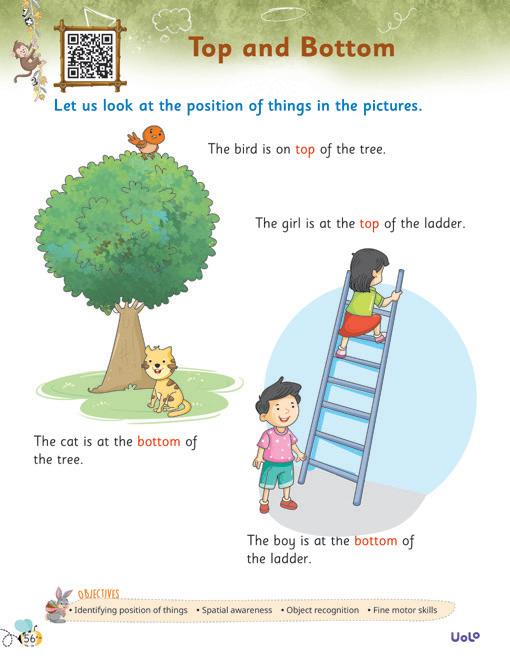
Sorting and Classifying: Encourage children to sort and classify objects based on differences in shape, size, weight, capacity, design and length. Encourage use of comparative and superlative adjectives to compare things such as tall, taller, tallest and use opposites like thick and thin, and wide and narrow. This helps children first observe attributes of qualities, then quantities, and eventually understand numbers.
Spatial Awareness: Develop children's understanding of spatial relationships through activities involving observing shapes around them and identifying the positions of things (e.g., over, under, in front of, behind, top, bottom) and related vocabulary.
Recognising Patterns: Introduce children to simple patterns using objects, colours, shapes, and eventually numbers to help them identify and extend repeating sequences.
Creating Patterns: Encourage creativity by having children create their own patterns, fostering early problem-solving skills and logical thinking.

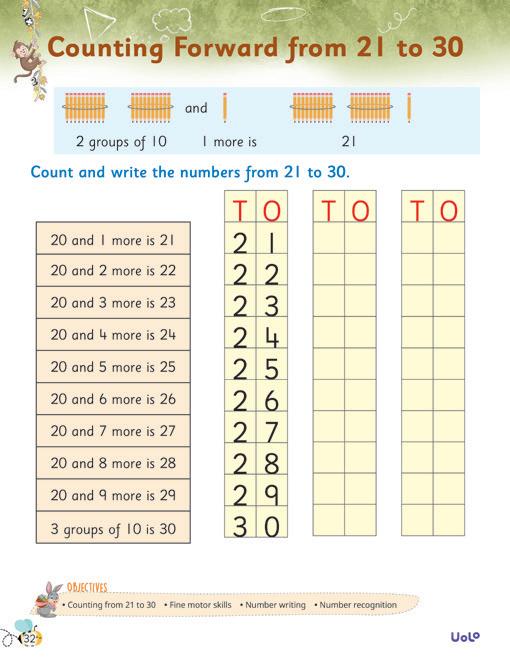

Number Recognition: Help children recognise and name numbers from 1 to 100 through engaging activities and visual aids.
Counting Skills: Foster one-to-one correspondence by having children count objects up to 100, strengthening their understanding of quantity and order. Use pictures, objects and stories to help children add and take away objects. This will help establish the basic foundation for concepts like addition and subtraction.
Number Sequencing: Encourage children to arrange numbers in the correct sequence, do backward and forward counting involving numbers 1 to 20, reinforcing their knowledge of numerical order.

Recognition of Shapes: Introduce basic shapes such as circle, square, triangle, rectangle, oval, star, diamond, and semicircle, helping children identify and name the shape of objects in their environment.
Properties of Shapes: Teach children about the attributes of shapes through hands-on activities and visual examples such as making shapes using playdough, straws, clay and paper. This helps children get a better understanding of the world around them and builds an important first step to learning geometry later.



Counting Practice: Reinforce counting skills by engaging children in counting objects, making bundles of 10 and then keep adding 1 more using familiar objects, helping them understand the practical application of numbers. Guide them to identify the concept of place value first in twodigit numbers and explore in three-digit numbers later by introducing it through the number 100. This helps simplify basic mathematical operations like addition and subtraction. Number Writing: Develop fine motor skills and number recognition by guiding children in writing numbers from 1 to 100 in their correct positions with regards to place value.
6. Oral Maths Vocabulary Development through Stories and Rhymes
Maths Stories: Enhance vocabulary and comprehension by introducing mathematical concepts through engaging stories that incorporate numbers, counting and shapes.
Maths Rhymes: Use fun and rhythmic maths rhymes to introduce and reinforce mathematical vocabulary, helping children remember and apply mathematical language in context.
Interactive Discussions: Foster oral language skills by encouraging children to discuss the maths stories and rhymes, promoting their understanding and use of mathematical vocabulary.



7. Includes Suggested Activities for Teachers and Parents
• Developing spatial understanding
• Tips for pattern recognition
• Numbers and counting
• Measurement skills
• Problem-solving and reasoning
• Tips for developing a positive attitude towards mathematics










We use big and small to talk about size.

The lion is big.




The bird is small.

Colour the big animal. Colour the small fruit.

Objectives
Size recognition and comparison Visual discrimination Fine motor skills








Look at the water animals. The animals are arranged according to their size.





















The crab is big. The turtle is bigger. The whale is the biggest.
Circle the big flower.






Circle the bigger fruit.






Circle the biggest vehicle.
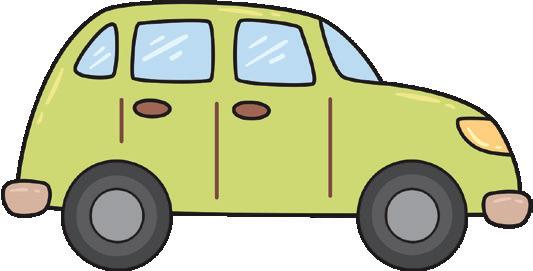


Objectives






Look at the animals. The animals are arranged according to their size.



The cat is small. The mouse is smaller. The ladybird is the smallest.
Circle the small leaf.

Circle the smaller bird.
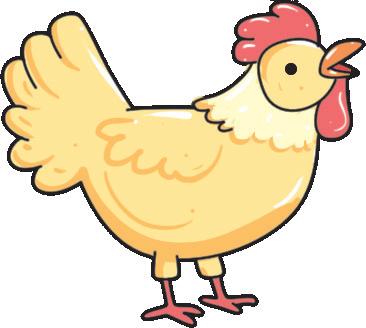
Circle the smallest box.

Objectives
Size recognition and comparison
Fine motor skills
Visual discrimination


Understanding relative sizes










We use long and short to talk about the length of a thing.
The string of purple beads is

The string of orange beads is short.
Colour the umbrella that is long.
Colour the pencil that is short.



Objectives






Look at the length of the oars. The oars are arranged according to their lengths.

Colour the long pencil.
Colour the longer comb.
Colour the longest eraser.
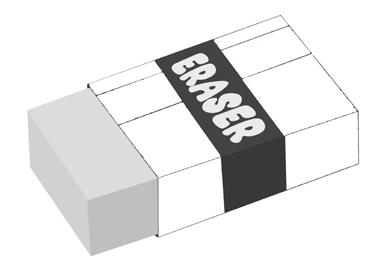



Objectives









We use the words heavy and light to talk about weight.




A bottle full of water is heavy. An empty bottle is light.
Write ‘H’ for the heavy object and ‘L’ for the light object.





Objectives






We use the words tall and short to talk about height.


This is a short girl.
This is a tall boy
Write ‘T’ for the tall object and ‘S’ for the short object.


Objectives









Let us look at the giraffe family! They are standing according to their height.
I am baby giraffe. I am mama giraffe. I am papa giraffe.
Tick () the tallest bird in the row.
Tick () the tallest thing in the row.



Objectives






Let us look at the frog family! They are arranged according to their height.

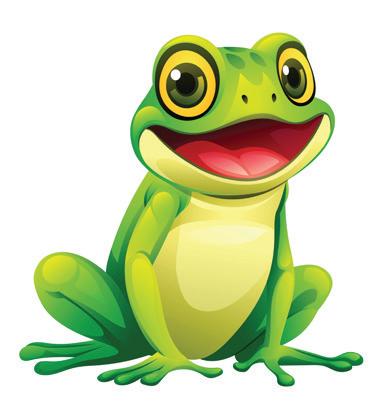


Tick () the shortest bottle. Tick () the shortest mop.

Visual discrimination Understanding height difference Observation and comparison Short
Objectives








Look at the three balls. Two of the balls look the same. The third ball is different.



Circle the thing that looks different in each set.
















Objectives
Fine motor skills




Visual discrimination Recognition of similarities and differences Observation and comparison






We use the words thick and thin to talk about the thickness of things.


A trunk of this mango tree is thick.
Circle the thick thing in each set.




A trunk of this coconut tree is thin.






Objectives Visual discrimination
Understanding concept of thickness





Fine motor skills









We use the words wide and narrow to talk about how wide something is.
Trace over the white dotted lines to take the car along the path. This is a wide path. This is a narrow path.












This is a circle. It has no sides and no corners.
We see the circle shape in many things around us.





plate button doughnut clock
Look at the picture and colour the circles accordingly.

Objectives






This is a square. It has 4 equal sides and 4 corners.


We see the square shape in many things around us.

Look at the picture and colour the squares accordingly.



Objectives






We see the triangle shape in many things around us.

nacho
All sides of a triangle may not be the same. Colour the triangles with different sides.
Same sides Different sides sandwich road sign hanger

Objectives
Shape recognition
Visual discrimination
Attention to detail This is a triangle. It has 3 sides and 3 corners.
Categorisation









Look at the patterns and draw what comes next in the box.



Objectives
Shape recognition
Pattern recognition
Fine motor skills
Attention to detail






This is a rectangle. It has 4 sides and 4 corners.
2 of its sides are long. 2 of its sides are short. The opposite sides are of equal length.

We see the rectangle shape in many things around us.



Colour the rectangles that look the same.


Objectives








This is an oval.
This is also an oval.
We see the oval shape in many things around us.



Let us turn these ovals into different things, such as a face or a balloon.



Objectives
Shape recognition
Shape transformation
Fine motor skills
Creativity and imagination






This is a semicircle. This is also a semicircle.
We see the semicircle shape in many things around us.

Let us turn these semicircles into different things, such as an umbrella or a basket.


Objectives
Shape recognition Shape transformation Fine motor skills
Creativity and imagination









This is a star. It has many slanting sides.
We see the star shape in many things around us.
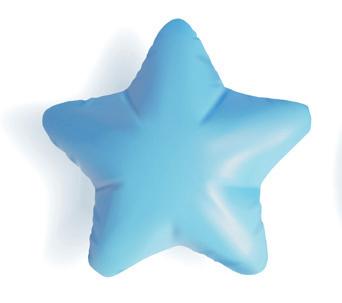
Find the stars in the string and colour them.




Objectives
Shape recognition Fine motor skills
Attention to detail
Concentration






This is a diamond. This is also a diamond.
We see the diamond shape in many things around us.



Count the small and big diamonds in the king’s crown. Write the numbers in the boxes.


Objectives








Look at the patterns below. Draw what comes next in the empty box.



Objectives
Shape recognition
Pattern recognition
Fine motor skills
Attention to detail






The number cards are arranged in order from 1 to 10. This is forward counting.
Start counting from number 1 and write the numbers 1 to 10.


1 2 3 4 5 6 7 8 9 10
Objectives







This is a number track. Count the numbers forward from 1 to 10 on it. Write the missing numbers on each number track.
1 2 3 4 5 6 7 8 1 4 8 9 1 2 5 7 9 10 1 5 7 10



Objectives Number recognition Forward counting Fine motor skills







Count the apples.













































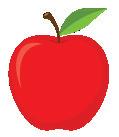




















1 2 3 4 5 6 7 8 9 10

Objectives
A group of 10 apples.









Nine crayons and one more crayon make ten crayons.
Let us make other groups of 10 crayons and count them by tens.
2 tens are 20
3 tens are 30
4 tens are 40
5 tens are 50








6 tens are 60
7 tens are 70
8 tens are 80
9 tens are 90
10 tens are 100

Objectives























































































































































































Count and write the numbers from 11 to 20 in the box in each set.




























10 and 1 more make 10 and 6 more make 11





























10 and 2 more make 10 and 7 more make













































10 and 3 more make 10 and 8 more make 10 and 4 more make






















































10 and 5 more make 10 and 10 more make

Objectives








Count and write the numbers from 11 to 20.
Number recognition 1 1 2 1 3 1 4 1 5 1 6 1 7 1 8 1 9 1 0 2 T O T O T O T O T O

Objectives Counting from 11 to 20 Fine motor skills


Writing skills






Let us count the pencils in the bundle.




















There are 20 pencils in 2 bundles.
2 groups of 10 are 20
Now, take the 2 bundles of 10 pencils each and keep adding pencils to them one by one to count until 30.
































































































































































































































Objectives

































2 groups of 10 and 1 more make 21.
2 groups of 10 and 2 more make 22.
2 groups of 10 and 3 more make 23.
2 groups of 10 and 4 more make 24.
2 groups of 10 and 5 more make 25.
2 groups of 10 and 6 more make 26.
2 groups of 10 and 7 more make 27.
2 groups of 10 and 8 more make 28.
2 groups of 10 and 9 more make 29.
3 groups of 10 make 30.







































Count and write the numbers from 21 to 30. and 2 groups of 10 1 more is 21











20 and 1 more is 21
20 and 2 more is 22
20 and 3 more is 23
20 and 4 more is 24
20 and 5 more is 25
20 and 6 more is 26
20 and 7 more is 27
20 and 8 more is 28
20 and 9 more is 29
3 groups of 10 is 30



Objectives Counting from 21 to 30 Fine motor skills Number writing Number recognition T O T O 1 2 2 2 3 2 4 2 5 2 6 2 7 2 8 2 9 2 0 3 T O






Write the numbers from 1 to 30.
Number recognition 1 T O T O 1 1 T O 1 2

Objectives
Fine motor skills
Number writing

























































Count and write the numbers from 31 to 40. and 3 groups of 10 1 more is 31 Objectives




















































































Count and write the numbers from 41 to 50. and 4 groups of 10 1 more is 41























Objectives
Counting from 41 to 50








Write the numbers from 1 to 50.
1 T O T O T O T O T O 1 1 1 1 1 2 3 4



Objectives
















































50 and 1 more is 51
50 and 2 more is 52
50 and 3 more is 53
50 and 4 more is 54
50 and 5 more is 55
50 and 6 more is 56
50 and 7 more is 57
50 and 8 more is 58
50 and 9 more is 59





























































Count and write the numbers from 51 to 60. and 5 groups of 10 1 more is 51 1 5 2 5 3 5 4 5 5 5 6 5 7 5 8 5 9 5 0 6 T O T O T O
6 groups of 10 is 60

Objectives




























































60 and 1 more is 61
60 and 2 more is 62 60 and 3 more is 63 60 and 4 more is 64
and 5 more is 65
and 6 more is 66
and 7 more is 67
and 8 more is 68
and 9 more is 69

7 groups of 10 is 70








































































Count and write the numbers from 61 to 70. and 6 groups of 10 1 more is 61 1 6 2 6 3 6 4 6 5 6 6 6 7 6 8 6 9 6 0 7 T O T O T O






























































70 and 1 more is 71
70 and 2 more is 72
70 and 3 more is 73
70 and 4 more is 74
70 and 5 more is 75
70 and 6 more is 76
70 and 7 more is 77
70 and 8 more is 78
70 and 9 more is 79

8 groups of 10 is 80





Objectives


















































































Count and write the numbers from 71 to 80. and 7 groups of 10 1 more is 71 1 7 2 7 3 7 4 7 5 7 6 7 7 7 8 7 9 7 0 8 T O T O T O







































































80 and 1 more is 81
80 and 2 more is 82
80 and 3 more is 83
80 and 4 more is 84
80 and 5 more is 85

80 and 6 more is 86 80 and 7 more is 87 80 and 8 more is 88 80 and 9 more is 89 9 groups of 10 is 90




































































































Count and write the numbers from 81 to 90. and 8 groups of 10 1 more is 81 1 8 2 8 3 8 4 8 5 8 6 8 7 8 8 8 9 8 0 9 T O T O T O














































































90 and 1 more is 91
90 and 2 more is 92
90 and 3 more is 93
90 and 4 more is 94
90 and 5 more is 95
90 and 6 more is 96
90 and 7 more is 97
90 and 8 more is 98
90 and 9 more is 99




10 groups of 10 is 100


Objectives











































































































Count and write the numbers from 91 to 100 under H (Hundreds), T (Tens), and O (Ones). and 9 groups of 10 1 more is 91 9 1 9 2 9 3 9 4 9 5 9 6 9 7 9 8 9 9 0 1 0 H O T H O T








Let us learn the names of numbers from 1 to 10. 2 2 two 3 3 three 4 4 four 5 5 five 6 6 six 7 7 seven 8 8 eight 9 9 nine 0 0 1 1 ten 1 1 one

Objectives
Association of numbers with their names Writing of number names Fine motor skills









Look at the picture and read the sentences.



The elephant comes just after the lion.

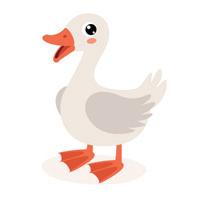



The dog comes just after the elephant.



To find a number that comes just after a given number, we count forward. What comes just after the number 4?
Let us look at the number track and count forward from 4.
Number 5 comes just after the number 4.
In the same way, number 8 comes just after number 7.
We can also find numbers that come just after the given numbers from 10 onwards by counting forward.
Number 21 comes just after the number 20.

Objectives







Look at the picture and draw the thing that comes just after.







Count forward and write the number that comes just after.



Objectives
Sequential thinking







Look at the picture and read the sentences.




The bear comes just before the monkey.
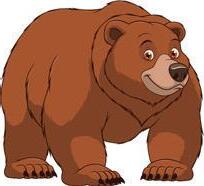
The giraffe comes just before the rat.
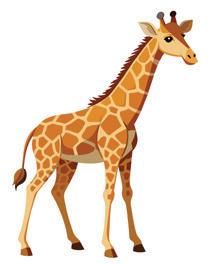


To find a number that comes just before a given number, we count backward. What comes just before the number 6?

Let us look at the number track and count backward from 6.
Number 5 comes just before the number 6.
Number 34 comes just before the number 35. Number 9 comes just before the
We can also find numbers that come just before the given numbers, from 10 onwards, by counting backward.








Look at the picture and draw the thing that comes just before.







Count backward and write the number that comes just before. 7 31



Objectives
Sequential thinking
Counting and number recognition
Fine motor skills







Look at the picture and read the sentences.


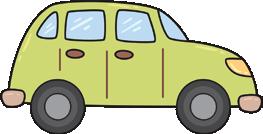

The bat comes between the ball and the car.
The car comes between the bat and the cake.







To find a number that comes between two given numbers, we count forward from the first number and backward from the second number. What comes between the numbers 1 and 3?

Let us look at the number track and count forward from 1 to 3.
Number 2 comes between the numbers 1 and 3.
We can also find numbers that come between the given numbers from 10 onwards by counting forward from the first number and backward from the second number.
Number 20 comes between the numbers 19 and 21. 1 2 3 4 1 19 2 3 5 6 7 8 9 20 21 10

Objectives







Look at the picture and draw the thing that comes between the given things in each set.












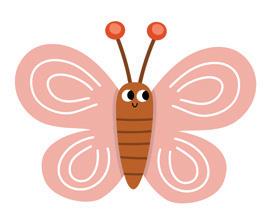

Write the number that comes between the given numbers.
12 29 10 27 45 71 43 69 40 86 38 84 Objectives
Sequential thinking
Counting and number recognition
Fine motor skills






Look at how the number cards are arranged in order from numbers 10 to 1. This is backward counting. Start counting from number 10. Then, write the numbers from 10 to 1.


Objectives Sequential thinking Understanding reverse order 10 9 8 7 6 5 4 3 2 1 10 1





Write the numbers to take the boy down the ladder from 10 to 1.


Write the numbers to take the girl down the ladderfrom 20 to 11.



Objectives






To compare two groups of the given things, we first count the things in each group. Then, we put the correct sign.









This shows us that number 6 is greater than number 1.


6 2 1 4




This shows us that number 2 is less than number 4.

Objectives
Counting objects Comparing quantities Understanding the concept of >/<







Count the things in each set and write the numbers in the squares. Use the correct sign (< or >) in the circle.
















































Objectives Counting objects
Comparing quantities
Understanding the concept of >/<






To compare two groups of the given things, we first count the things in each group. Then, we put the correct sign.





5 5 =







This shows that both sides have an equal number of mangoes.
Count the things in each set and write the numbers in the squares. Use the correct sign in the circle.













Objectives







Circle the smallest number in each set.

Write the numbers in order from small to big.



Objectives
Number recognition Comparing numbers Ordering numbers from least to greatest Fine motor skills






Circle the biggest number in each set.
Write the numbers in order from big to small.


Objectives









Let us look at the position of things in the pictures.

The cat is at the bottom of the tree.
The bird is on top of the tree.
The girl is at the top of the ladder.

The boy is at the bottom of the ladder.



Objectives
Identifying position of things Spatial awareness Object recognition Fine motor skills




Circle the things that are at the bottom in each box.








Circle the things that are at the top in each box.









Objectives

















Identifying position of things Spatial awareness Object recognition Fine motor skills













The blue bird is flying over the tree. Let us look at the position of things in the picture.

The red bird is sitting under the tree.



Objectives
Identifying position of things Spatial awareness Object recognition Fine motor skills







Tick () the picture in which the frog is under the mushroom.

Tick () the picture in which the butterfly is over the flower.



Objectives
Identifying position of things Spatial awareness Object recognition Fine motor skills









Let us look at the position of things in the picture.

The sheep is standing behind the tree.

The sheep is standing in front of the tree.



Objectives
Identifying position of things Spatial awareness Object recognition Fine motor skills





Tick () the picture in which the deer is standing behind the fence.



Tick () the picture in which the girl is standing in front of the cabinet.



Objectives
Identifying position of things
Spatial awareness
Object recognition
Fine motor skills








Let us read the instructions and do the actions.









Open your eyes!










Open your mouth!




















Open your pencil box!
Open your bag!

Close your eyes!



















Close your mouth!




















Close your pencil box!
Close your bag!

Match the things that are open with the closed ones.








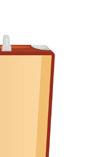

















Objectives





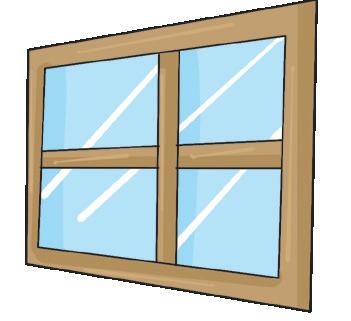














A room heater and iron become hot when we switch them on.

Tea, coffee, and soup are hot.

Circle the hot things.



Objectives Critical thinking





Identifying hold and cold temperature








We keep things in a fridge so they remain cold. We can also add ice to some things to make them cold.



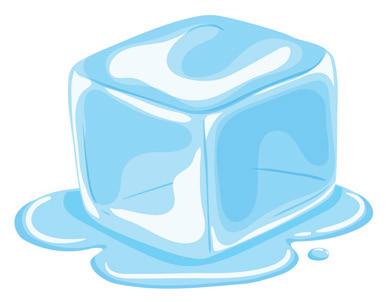
Ice cream, fruit juice, and water kept in the fridge are cold. Circle the cold things.




Objectives









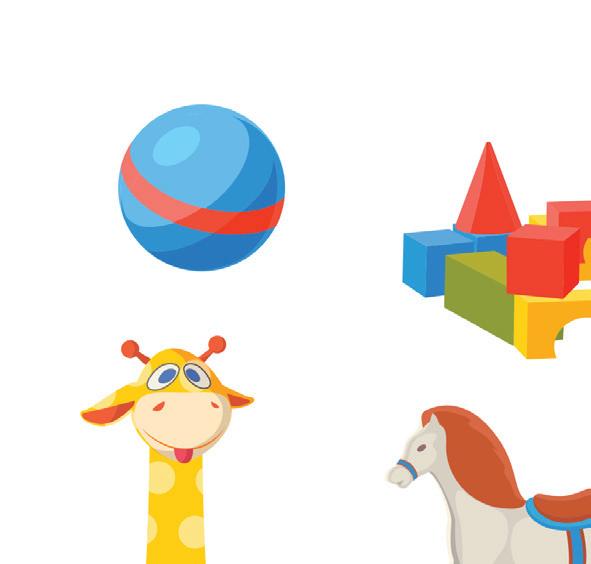


We use money to buy things that we need.


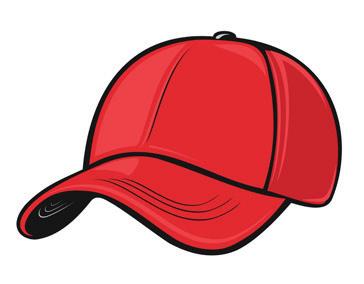
Let us look at these notes and coins.





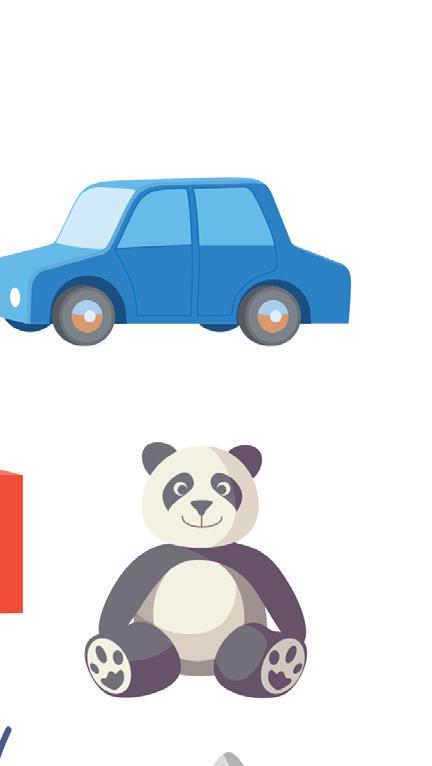





























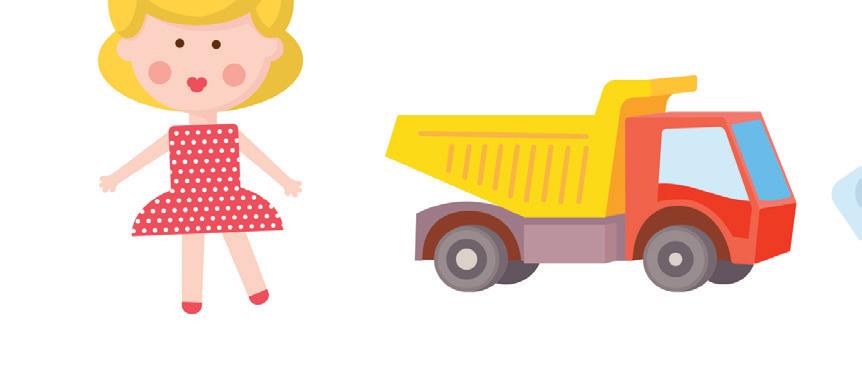




















Now, let us look at the price tags on the things carefully.


Objectives








Look at the price tags carefully and match the things with the correct notes.
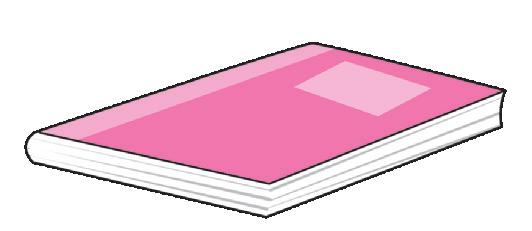


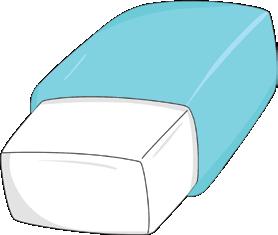









The numbers that show the order in which things are arranged are called ordinal numbers.


1st Sam is first in the line.
2nd Yami is second in the line.
3rd Ali is third in the line.
4th Neha is fourth in the line.
5th Karan is fifth in the line.

Objectives







Look at the picture and write 1st, 2nd, 3rd, 4th, or 5th in each box.




Objectives
Understanding ordinal numbers Sequencing Understanding position of things


Look at the X-mas tree.





There are 3 gift boxes kept under the tree.

Now, Sia has 4 gift boxes. + =
Sia gets 1 more gift box.

3 gift boxes + 1 gift box is = 4 gift boxes
This is called addition.

Objectives
Understanding concept of addition Counting and number recognition Fine motor skills









Tony, the magician, has 2 rabbits. 2
He takes out 1 more rabbit out of his hat.

2
1


How many rabbits does Tony have now? He has 3 rabbits.
2 rabbits + 1 rabbit = 3 rabbits

The sign of addition is ‘+’.
The sign of addition is ‘+’.

Objectives






1. Count the things in the first group and write the number.
2. Count the things in the second group and write the number.
3. Count all the things in both the groups together to add them. Write the number you get.









Let us follow these steps to add things in two groups. Count the things in each group, add, and write the total.















Objectives











Look at the scene.
5 rabbits are playing in the garden. 1 rabbit goes away. There are now 4 rabbits left in the garden.

We subtracted 1 rabbit from the group to get the number of rabbits left. This is called subtraction.



Objectives
Understanding concept of addition Counting and number recognition Fine motor skills






Skippy squirrel has 4 nuts.



She eats 3 nuts.
How many nuts are left with Skippy? Let us see.
When 3 nuts are taken away from 4 nuts, 1 nut is left. 4 – 3 = 1
The sign of subtraction is ‘–’.

Objectives
Understanding concept of addition Counting and number recognition Fine motor skills








Let us cross out 1 object from each group. How many are left? Count and write the number.






































Let us cross out 2 things from each group. How many are left? Count and write the number.









How many are left?


There were 7 birds in the tree. 3 flew away. How many are left. 3 – 2 = 4
Objectives Concept of taking away Counting and number recognition
Fine motor skills






Let us look at the number track. If we start at number 2 and jump 2 steps forward, what number will we reach?

We will reach the number 4.
Count in 2s and write the missing numbers.
Skip counting by 2 means, we add 2 to the previous number each time. 4 5 7 9 1 2 3
1 2 4 6 8

Objectives






Count in 2s and circle the correct number. Write the numbers that you have circled.

Skip counting by 2 Adding numbers Fine motor skills 8 9 10 11 12 13 14 15 16 17 18 19 2 3 4 5 6 7 4 12

Objectives








Let us look at the number track. If we start at number 5 and jump 5 steps forward, what number will we reach?

We will reach the number 10.
Skip counting by 5 means, we add 5 to the previous number each time.
Count in 5s and write the missing number.







Count in 5s and circle the correct number. Write the numbers that you have circled. Objectives









Let us learn and write the names of numbers from 11 to 20. 1 1 2 2 twelve 1 1 3 3 thirteen 1 1 4 4 fourteen 1 1 5 5 fifteen 1 1 6 6 sixteen 1 1 7 7 seventeen 1 1 8 8 eighteen 1 1 9 9 ninteen 0 0 2 2 twenty 1 1 1 1 eleven

Objectives Association of numbers with their names Writing of number names Fine motor skills











A clock tells us the time. It has a long hand and a short hand. The clock also has the numbers 1 to 12 on it, as shown in the picture.

When the long hand is at 12 and the short hand is at 2, it is 2 o’ clock.




Objectives
When the long hand is at 12 and the short hand is at 9, it is 9 o’ clock.





Look at the short hand of the clock and write the time in the box.







Objectives
Recognising and writing time Number recognition
o' clock
o' clock
o' clock
o' clock







What do you do at this time? Match.

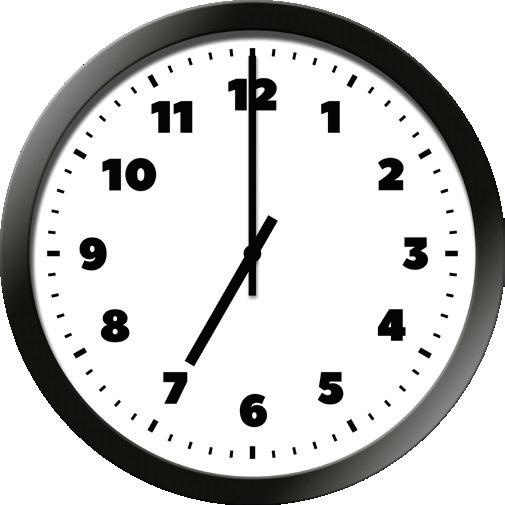














A day is divided into morning, afternoon, evening, and night. We do different activities at different times of the day.

Morning


Objectives


Evening Afternoon Night
Recognising time Daily routine activities










There are seven days in a week. Let us read the names of the days of the week aloud.

Monday, Tuesday, up we go, Wednesday, Thursday, nice and slow.
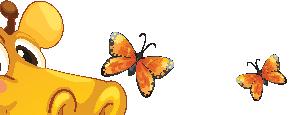

Friday is here, school is almost through, Saturday comes, with fun for you!











Sunday is calm, we rest and stay, Then Monday starts another day!

































Monday Ist day
Wednesday 3rd day
Thursday 4th day
Friday 5th day
Saturday 6th day
Sunday 7th day
Objectives Awareness of time Days of the week




Tuesday __________ 2nd day












There are twelve months in a year. Let us take a look at the calendar and read aloud the names of the months.



Objectives








Here are some interesting and fun activities that help prepare the young learners to understand some core mathematical topics in an easy and exciting manner.
Pre-Number Concepts
• Activity: Give children a box of colourful beads or blocks and ask them to sort by colour.
Objective: This helps with colour recognition and sorting things based on a single attribute.
• Activity: Place two kinds of objects, like blocks or beads, in front of the children. Ask them to count the number of blocks or beads in each container. Then, ask them which container has more blocks or beads.
Objective: This helps children learn about counting and understanding the concept of more and less.
• Activity: Provide children with a set of objects like boxes, bottles, blocks, feathers, beads, blocks, books, paper, and confetti balls. Ask them which one is heavier or lighter.
Objective: This helps children compare things according to their weight.
• Activity: Point to different objects in the surroundings (around you). Ask the children to name the shape of each object. For example, ask them the shape of a clock, board, and table.
Objective: This helps children learn about shapes and identify the shape of objects that they see in their surroundings.
• Activity: Encourage children to make 2D shapes using play dough, such as squares, rectangles, triangles, and circles. They can even use these shapes to create other objects like a shapes clown or a shapes house.
Objective: This helps in comparing and recognising differences in different shapes and the things around us.
• Activity: Ask children to count backwards with the help of rhymes and songs.
Ten little ducks went out one day, Over the hills and far away. Mother duck said, “Quack, quack, quack!” But only nine little ducks came back, back, back. Continue in the same manner until you reach the number 1.
One little duck went out one day, Over the hills and far away.
He loudly said, “Quack, quack, quack!”
Then, all the little ducks came back, back, back!
Objective: This helps children with counting, number recognition, understanding their numerical value, and sequencing numbers.
• Activity: Provide foam or sand paper numbers for children to play with and explore.
Objective: This helps them recognise and identify the shape and form of numbers.
• Activity: Provide children with a book or notebook with one bowl and two fish patterns. Encourage them to get the number five by doing 2 + 3 or 1 + 4. Guide them to practise this technique for different single digit numbers.








Objective: This activity involves using thinking skills. It teaches children how to break numbers in various ways.
• Activity: Provide colourful cut-outs of different numerals. Arrange the cut-outs of numbers in different orders and ask the children what comes next. For example, put four or five numerals in front of the children and ask them what comes next in the order.
Objective: These activities help with children’s memory retention and enhance sequential skills.
• Activity: Provide colourful blocks with different numbers written on them in bold. Divide the children into small groups and ask them to stack the cups while reading out the numbers written on them.
Objective: This activity aims to improve children’s analytical ability in a fun way.
• Activity: Take a square-shaped board or cut-out and write numbers randomly on it. Ask the children to place the buttons on the number that has been read out.
Objective: This helps children with listening comprehension and number recognition.
• Activity: Provide a sheet of paper with numbers written or printed on them and a small toy car. Ask the children to place their toy on any number, say 4. Now, direct them to add 2 to their current position, i.e., 4 + 2 = 6, and move the car to the number 6.
Objective: The main aim is to introduce mathematical operations, like addition and subtraction on number lines. This helps children understand the basics of these operations.
• Activity: Prepare some colourful balloons with numbers written on them using markers. Hide the balloons in the room and ask the children to find them. Then, ask them to read out the number. You could also read out a number and then ask them to pick out the balloon matching that number.
Objective: This helps children with counting and number recognition.
• Activity: Ask the children to build a tower with a fixed number of blocks. For example, ask them to build a tower with 15 blocks.
Objective: This helps children develop organising skills.
• Activity: Draw a hopscotch pattern on the floor or ground and write numbers and shapes. Encourage the children to jump on a number and follow the directions.
Objective: Hopscotch is one of the traditional games that aids in forward and backward counting and number recognition.
• Activity: Ask children to roll a dice on a board that has numbers written on it up to 30, 50, or 100. Encourage the children to move their token to the number that appears on the dice. For example, if the current position of the token is 10 and they roll a 6, help them move 6 spaces forward to 16.
Objective: This helps children improve their identification skills and learn how to do simple mathematics.
These activities are engaging and adaptable for both classroom and home, fostering foundational math skills through play and exploration.












triangle square


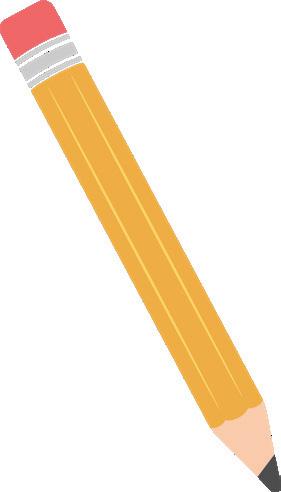










oval circle rectangle


















































































































One Two



















































































































































Three
Nine Four Seven Ten Five Eight
Six






Eleven

















Twelve Fifteen




Eighteen

Nineteen


Twenty


















DAWN is a comprehensive, NCF 2022-based Early Childhood Education program that lays a solid foundation for lifelong well-being and holistic growth, encompassing physical, cognitive, and socio-emotional development.
This Numeracy Skillbook is specifically designed to develop essential maths skills, including pre-number and number concepts, one-to-one correspondence, sorting, comparing, classification, logical sequencing, and pattern recognition.
Additional Resources
• Flash Cards
• Sticker Sheets
• Suggested Activities List, for teacher and parents
• Teacher's Manual
• Digital Resouces
• Assessment Sheets and Holistic Progress Card
• Play-based learning activities, which promote holistic development of the child in all ECE domains
• School readiness, which is assured in the curriculum and learning design
• All-round development, in areas of physical, cognitive, cultural and socio-emotional domains
• Teacher assets, like assessment tools and lesson plans to help maximise program quality and outcomes
Uolo partners with K-12 schools to provide technology-enabled learning programs. We believe that pedagogy and technology must come together to deliver scalable learning experiences that generate measurable outcomes. Uolo is trusted by over 15,000+ schools across India, Southeast Asia and the Middle East.
Not to be sold separately
ISBN 978-81-980546-7-8
